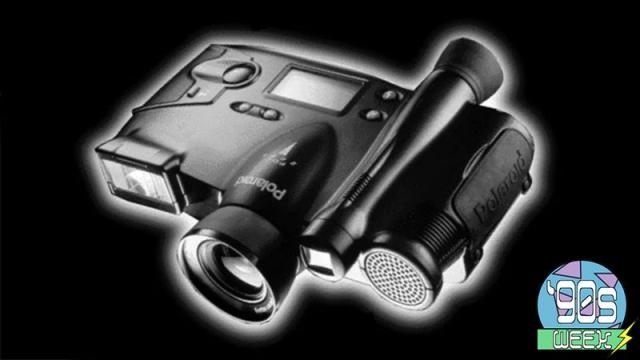The ‘90s might be best known for 16-bit gaming, Tamagotchis, and the earliest flip phones, but I remember it as a decade where we got to watch digital cameras go from expensive tools for professional photographers to devices accessible to the average consumer — complete with an awkward teenage phase where companies were willing to try anything to make their digital camera designs stand out.
Walk into a phone store today and you’ll be greeted by shelves and shelves of featureless glass slabs, but it wasn’t always like that. There was a time when smartphones came in countless shapes and sizes and designs, and the same was true for digital cameras as they transitioned into the consumer space. It might not be easy to differentiate the mirrorless shooters you’ll find in camera stores today by design alone, but in the ‘90s, when the technology was new and novel to consumers, companies were more willing to experiment with the hardware, either to help differentiate their products from the competition or to overcome the technological limitations of the time.
Digital cameras even ended up slotted into our favourite handheld consoles, but by the end of the ‘90s, the devices had finally found their way, offering features and functionality on par with the film cameras they would eventually render obsolete. Here are some of the most notable digital camera designs of the ‘90s, and how they helped contribute to the features and functionality of the shooters we still use today — at least until they’re all eventually replaced by smartphones.
Logitech Fotoman FM-1 (1991)
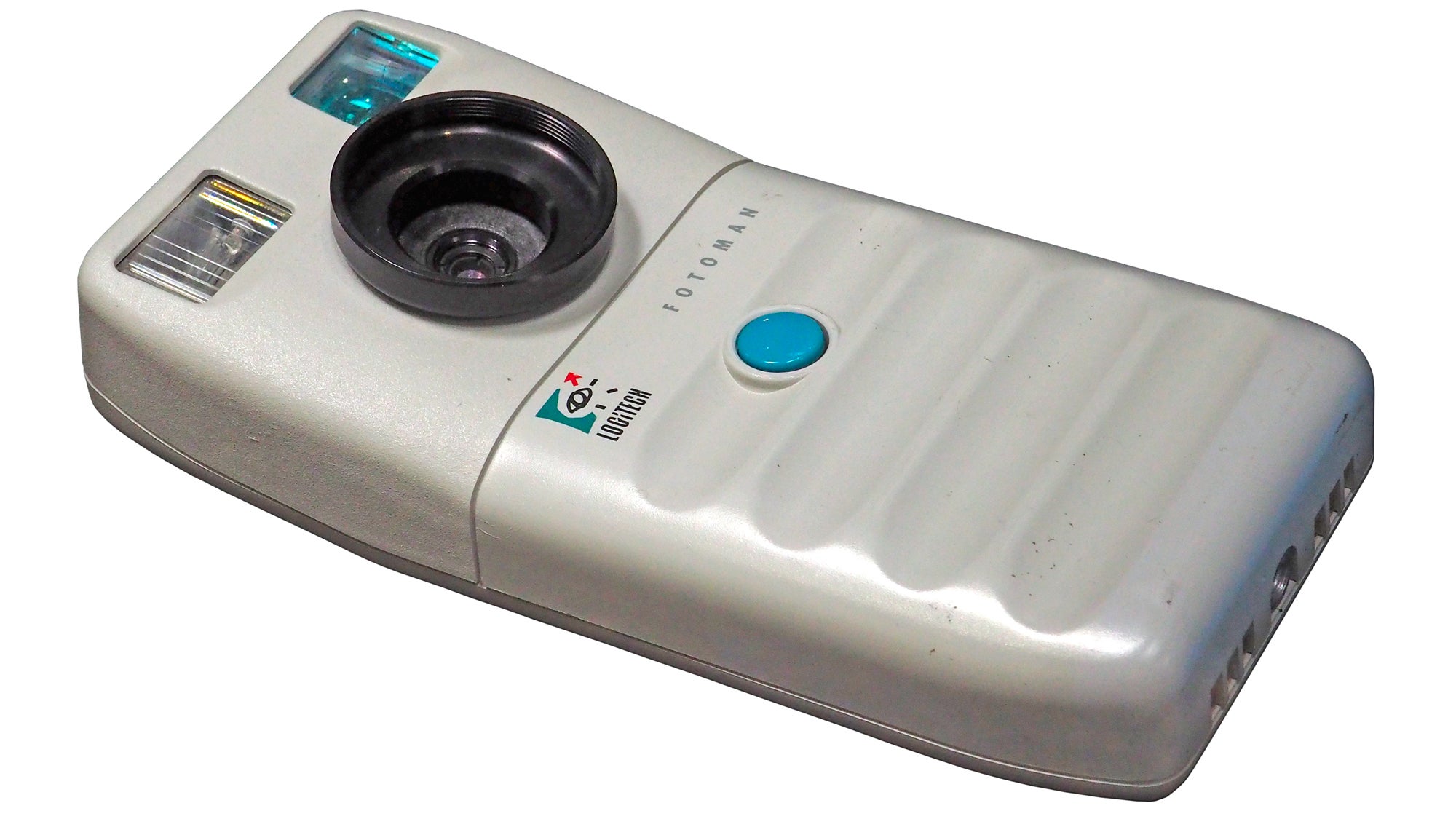
It was Logitech, a company that has been making electronic peripherals for decades, that has the most legitimate claim on introducing the first consumer digital camera with its Fotoman FM-1 that even pre-dates the Kodak NC2000. It first went on sale in 1991 for $US995 (the equivalent of $3,500+ if purchased today) which is surprisingly expensive even before you break down the camera’s awful specs.
The Fotoman FM-1’s design is reminiscent of the Nokia candy bar phones that once dominated our pockets, and it featured a tiny 0.15MP sensor that could only capture 376×240 images in grayscale; squeezing up to 32 of them onto its 1MB of onboard storage. But somehow a lack of colour wasn’t the biggest challenge of using this digital camera. The Fotoman’s digital memory required a constant source of power to store images, so if you hadn’t backed up your shots before its batteries died, they would be gone forever.
Kodak AP NC2000 (1994)
Before digital cameras entered the consumer space, they debuted as tools for professional photographers, with the Kodak AP NC2000 being one of the most iconic and memorable digital cameras of the early ‘90s. Weighing in at over 2 kg, the camera was a mashup of a Nikon N90s film camera with a Kodak digital back attached capable of capturing 1.3MP images — although not very reliably. Back then there were no screens to preview the shots you had taken and the hardware was notoriously unreliable, but the NC2000 was still embraced by photojournalists, the Associated Press, and publications who could afford a $US15,000+ camera.
Apple QuickTake 100 (1994)
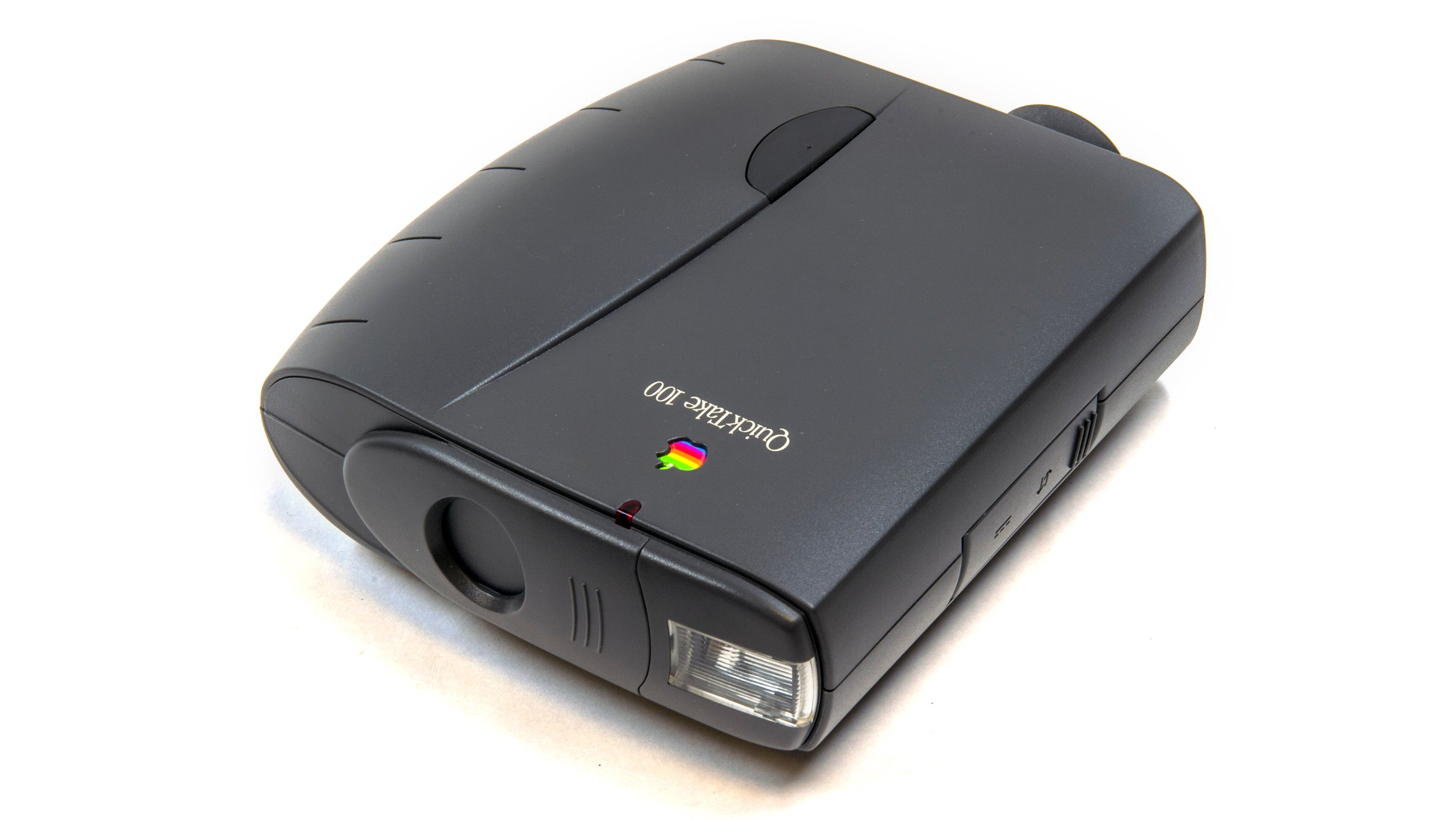
Although best known for its computers and smartphones, Apple has a long history of experimenting with various consumer devices before they become mainstream. During Steve Jobs’ absence from the company, Apple partnered with Kodak to create the QuickTake 100, which, despite a $US749 price tag back in 1994, was considered a very affordable consumer-level digital camera at the time.
It boasted a 0.31 MP sensor and only had enough storage on board (1MB) for eight 24-bit colour, 640×480 images, so easy access to a computer to regularly offload images was a necessity. Several upgraded models of the QuickTake would be released in the years that followed. Steve Jobs returned as Apple’s CEO in 1997 and put an end to the company’s digital camera pursuits — at least until the iPhone arrived.
Ricoh RDC-1 (1995)
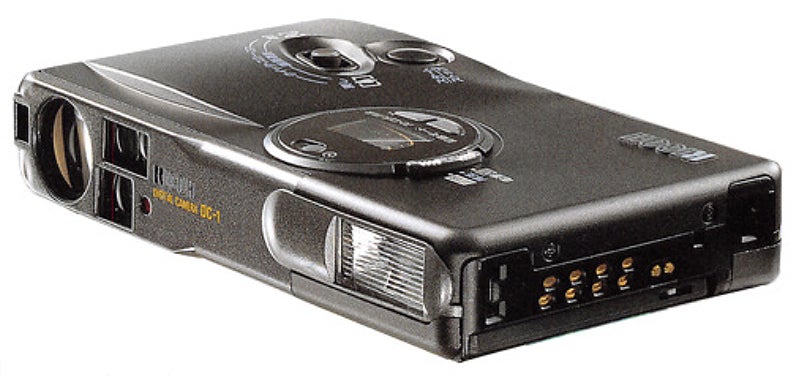
Ricoh’s first digital camera, the RDC-1, which debuted in 1995 for a hefty $US1,700, came with a handful of firsts for digital imaging, including the ability to record very small and very short digital videos. Its 0.41MP sensor was decent for the time, but the digital camera’s biggest selling point was a modular design with a proprietary mount on one side allowing the RDC-1’s capabilities to be expanded with everything from a larger battery to a swivelling LCD display, clipped onto its side.
Minolta RD-175 (1995)

Sensors were relatively small and low-resolution in the ‘90s, so to help improve the quality of digital cameras at the time, and make them more useful for professional applications, Agfa and Minolta teamed up to create the RD-175: an absolute beast of a shooter that combined a Minolta Maxxum 500si Super film camera with a chunky digital back featuring not one, but three 0.38MP sensors.
The light coming in through the RD-175’s lens was split by a prism into three beams sending red and blue to one sensor, and green to the other two sensors, improving the camera’s performance in low light conditions. All that complexity also helps explain why the RD-175 cost $US9,995 back in 1995.
Nikon CoolPix E100 (1996)
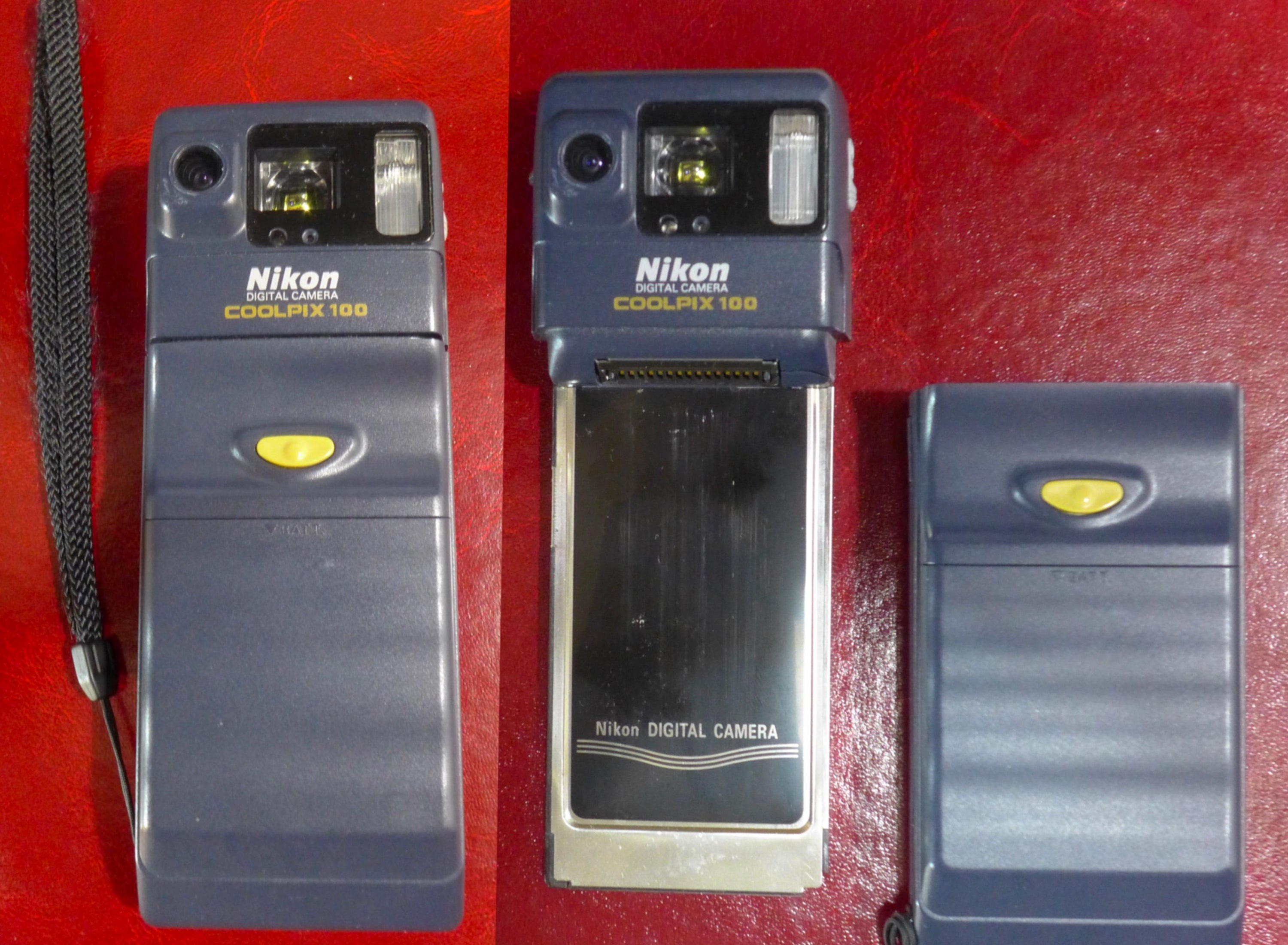
One of the challenges of using the earliest digital cameras wasn’t the limited resolution or lack of an LCD display, but simply finding a way to quickly and easily get the shots onto another device in the days before USB. The solution Nikon came up with for its $US500 CoolPix E100 was to build a digital camera around a PCMCIA card which could be slotted directly into many Windows laptops of the time. It was a clever solution, but a less-than-stellar digital snapper, with a 0.3MP sensor capturing images at just 512×480 in size.
Canon PowerShot 600 (1996)
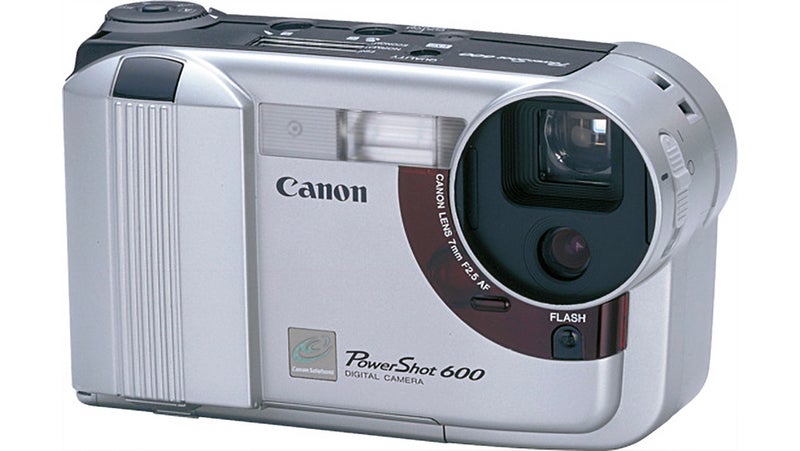
The Canon PowerShot 600 was the company’s first digital camera targeted at the consumer market, and the first to bear the PowerShot branding which is still in use today, 27 years later. With a 0.57MP sensor that was larger than most on the market at the time, the $US1,000 PowerShot 600 didn’t offer an LCD screen on the back but did allow users to snap photos in an uncompressed RAW format, making them easier to digitally manipulate in Adobe Photoshop 4.0 — the ancient version of the popular photo editing app available at the time.
Polaroid PDC-2000 (1996)
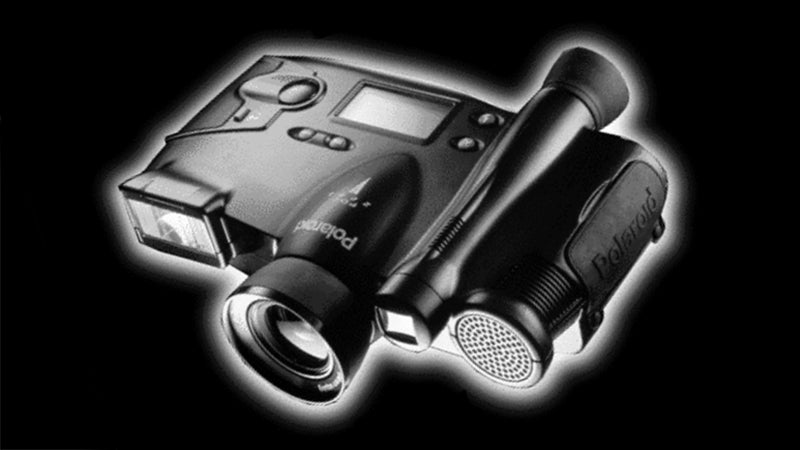
Looking like a toy lifted right off Batman’s utility belt, the Polaroid PDC-2000 was targeted more towards professionals and included features like a durable magnesium alloy body, swappable lenses, and a sonar-based autofocus mechanism, which explains the grill on the front that looks like a shower head.
Its 1MP sensor could snap 800×600 images (huge, for the time) but what made the PDC-2000 really stand out amongst the competition was that it included 40-60MB of internal memory when most digital cameras offered just 1-2MB inside. That also helps explain why the Polaroid PDC-2000 cost between $US3,695 and $US4,995 at the time — the equivalent of $US7,100+ to $US9,500+ today.
Sony Digital Mavica MVC-FD5 (1997)

Why did Sony, a giant corporation known for its miniaturization of consumer electronics, release a digital camera in the ‘90s shaped like a chunky box? The Sony Digital Mavica MVC-FD5, which debuted in 1997 for $US699, is a perfect example of form following function because instead of the camera using proprietary memory cards (something Sony would insist on years later) it used 3.5-inch floppy disks (which Sony had invented back in 1981) which were cheap and plentiful at the time. With a 0.38MP sensor inside, each 1.4MB floppy disk could hold around 40 photos, and the approach made transferring those images to a computer incredibly easy.
Canon PowerShot 350 (1997)
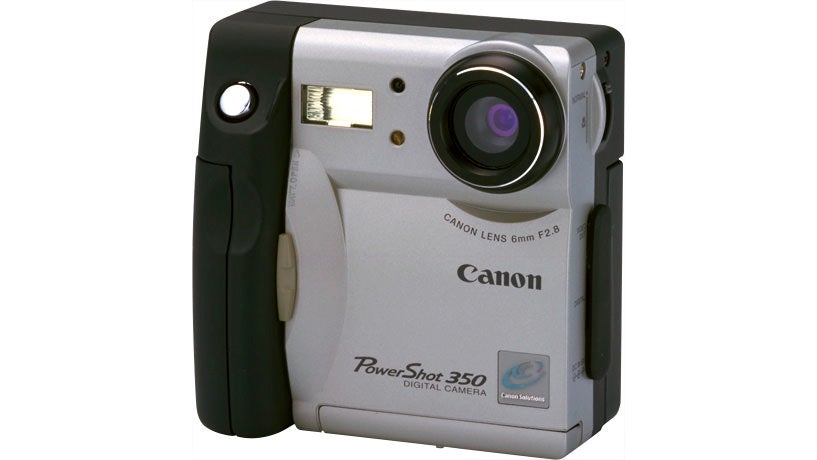
Although just as boxy looking as the Sony Digital Mavica MVC-FD5, the $US700 Canon PowerShot 350 skipped floppy disks and stored 0.35MP images on compact flash memory cards. So why the boxy design when the camera didn’t need to incorporate a floppy disk drive? The Canon PowerShot 350 introduced a novel new feature that is now all but standard on digital cameras: an LCD screen on the back that could be angled to improve visibility and to make the camera more flexible to use.
Nintendo Game Boy Camera (1998)
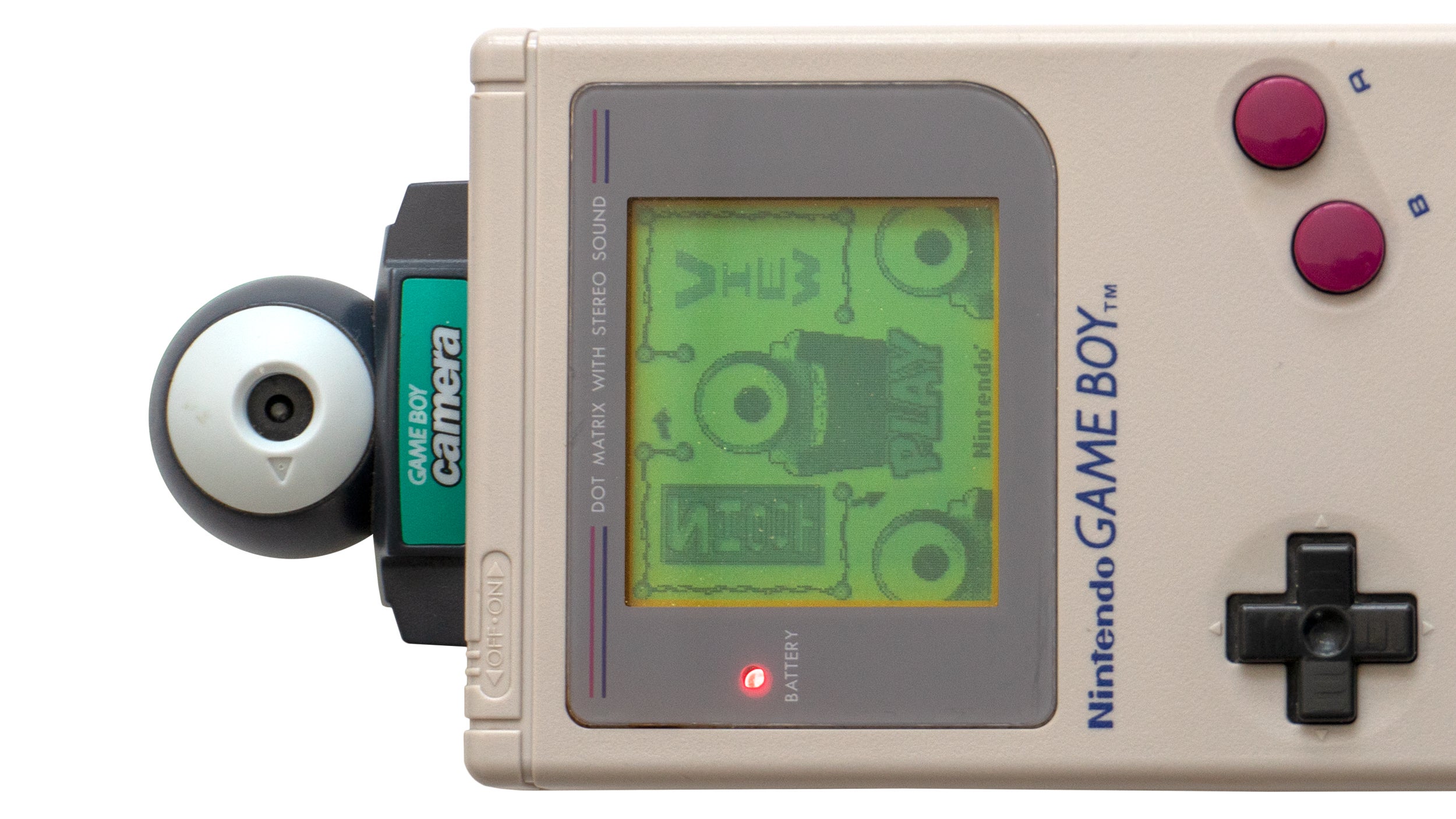
With a price tag of $US90, when the Game Boy Camera accessory was released in 1998, it was destined to become the first digital camera for millions of kids around the world. Although it couldn’t compete against standalone digital cameras of the time when it came to specs, the 2-bit, 0.001434MP Game Boy Camera perfectly balanced affordability, usability, and entertainment through Game Boy software that allowed for basic edits and other fun interactive activities with the digital photos it captured. In a way, it was the precursor to how we use the cameras and images we snap on our smartphones today, although sharing photos with friends was a lot harder back in 1998.
Nikon CoolPix 900 (1998)
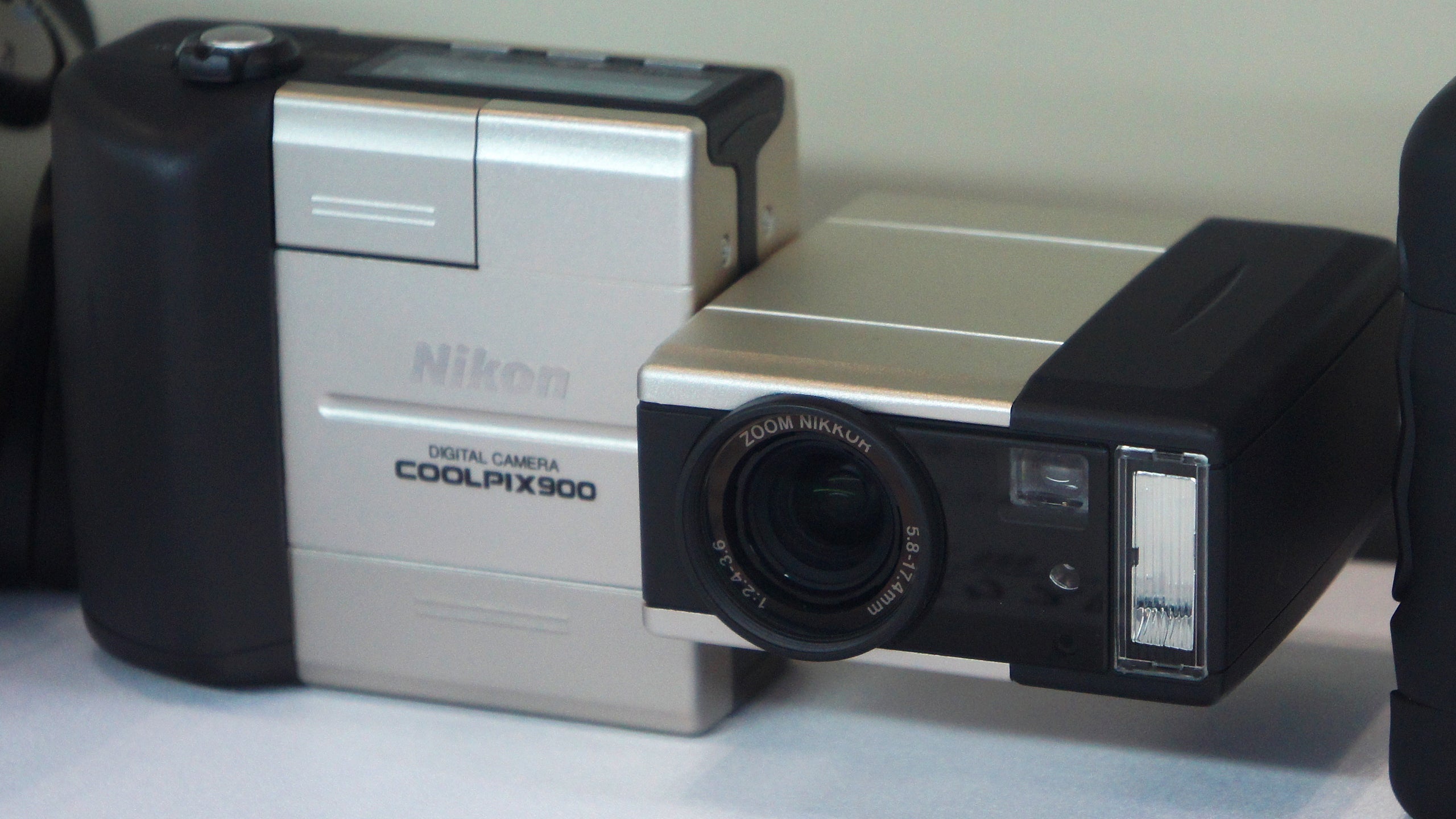
I distinctly remember my work friends drooling over the Nikon CoolPix 900 when it arrived in 1998, despite my concerns over the durability of the pivoting hinge that split the camera into two parts as a clever way to improve its usability. For $US995, it brought with it a 1.25MP sensor snapping images that were 1,260×960 in size, a two-inch LCD display, 3X optical zoom, and a custom mode that allowed for manual adjustments to be made to the shutter speed and f-stop. With the Nikon CoolPix 900, it felt like consumer-level digital cameras were starting to grow up and finally transition out of a period where a novel design or unique features trumped their basic image-capturing capabilities — almost.
Canon PowerShot A5 (1998)
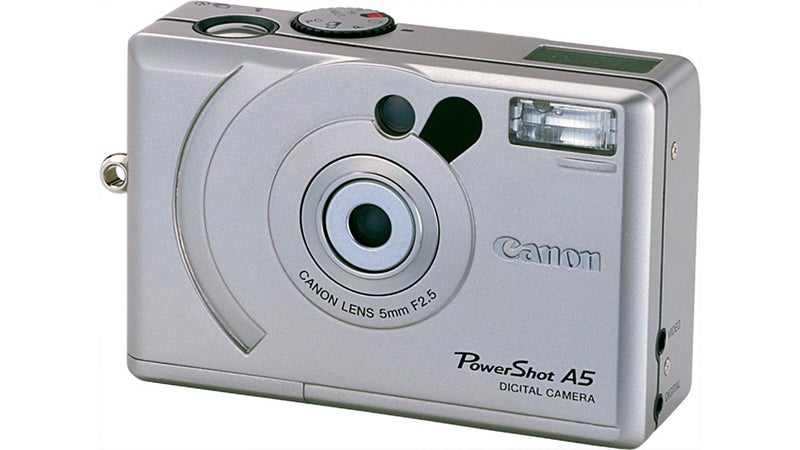
It wasn’t just an eventual drop in price and improved specs that helped sell digital cameras to consumers. Without the need for squeezing a roll of 35mm film inside, digital cameras could be made impressively small and compact, and no one churned out compact point-and-shoots better than Canon.
Before smartphones, Canon’s digital P&S cameras were the best tool for those who wanted to carry a camera with them at all times but didn’t want to feel like they were lugging one around. Small enough to slip into a shirt pocket, the PowerShot A5 was one of Canon’s first truly compact digital shooters and paired a durable metal body with an 0.81MP sensor, a motorised retractable lens assembly, and an 8MB compact flash card, with a $US700 price tag. It was probably the first digital camera your parents or older relatives owned and eagerly whipped out at parties and other family gatherings.
Canon XL1 (1998)
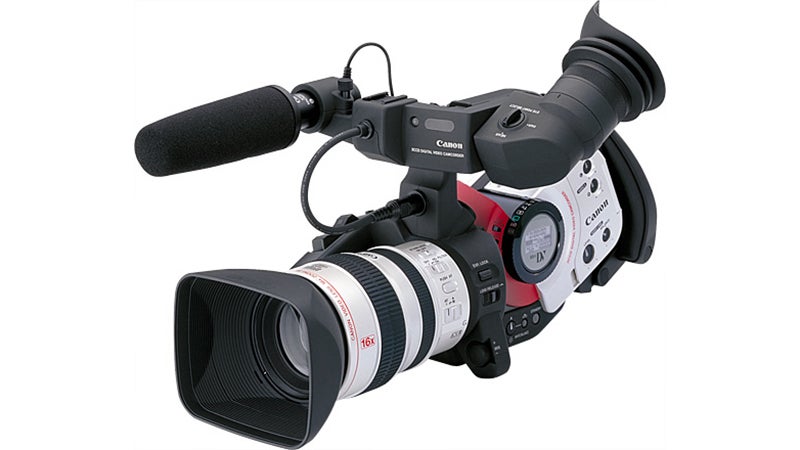
You can’t talk about the evolution of digital imaging in the ‘90s without a mention of one of the most iconic digital camcorder designs from that decade. Although its predecessor, the Canon GL1, had made a solid name for itself amongst videographers, it was the Canon XL1, with its unique ‘bent’ design, that would be embraced by amateur filmmakers and creative types working with less-than-Hollywood-sized budgets.
Like the GL1, the Canon XL1 featured three CCDs, although bumped up in size to 1/3-inch, which each independently captured red, green, and blue light that had been separated by a prism. This, along with a beefy 16X optical zoom lens and image stabilisation, allowed the XL1 to capture incredibly detailed footage with excellent colour reproduction and impressive low-light performance for the era.
Canon PowerShot G1 (2000)
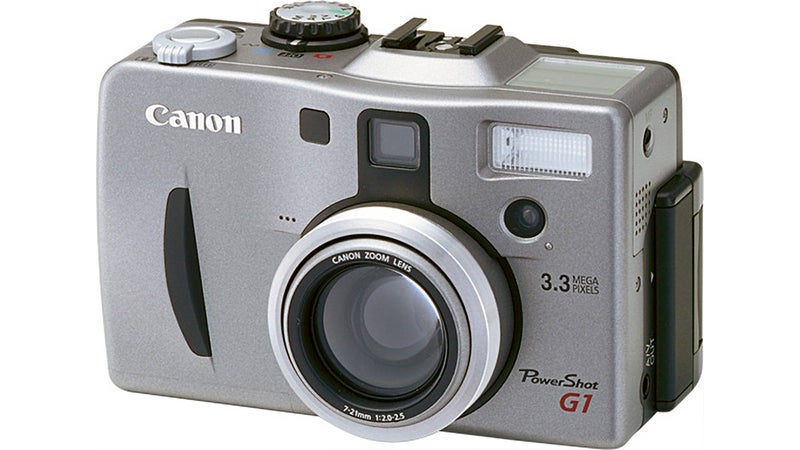
Although I obsessively followed the digital camera market for years and poured over the ever-improving specs of the latest and greatest models announced, it wasn’t until the ‘90s would draw to a close that I was finally convinced that consumer-level digital cameras had actually grown up. I’ve written about the Canon PowerShot G1 before, which paired a 3.3MP sensor with a 3X optical zoom lens and full manual controls — the one feature I cared about most.
The Canon PowerShot G1 replicated most of what an expensive DSLR could do (minus swappable lenses) in a camera that was small enough to carry everywhere. And it came with a price tag of just over $US1,000, which the mortgage-less younger version of myself was able to justify as being a real bargain. The PowerShot G1 also ended up being my crash course in photography, and I shot thousands of photos with it while experimenting with its advanced capabilities.
The PowerShot G1 was an incredibly successful and popular model for Canon, and it didn’t take long for most consumer digital cameras, even those from Canon’s competitors, to start to look a lot like it. Even Nikon eventually abandoned the unique pivoting design of the CoolPix 900 for a more traditional camera body a few years later, and the mirrorless Sony I shoot with today still shares a lot of the design details of the PowerShot G1, including a highly articulated LCD screen on the back. It was iconic, and it did for digital cameras what the iPhone did for smartphones; helping define digital photography for years to come.
